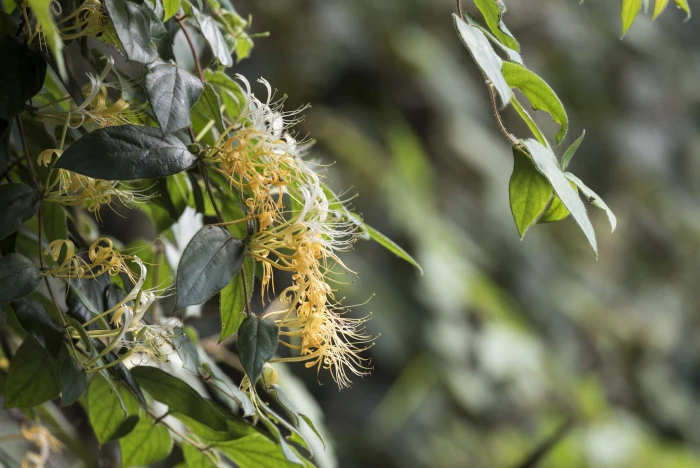Large-Flowered Honeysuckle
(Lonicera macrantha)
Large-Flowered Honeysuckle (Lonicera macrantha)
/
/

Licheng Shih
CC BY 4.0
Image By:
Licheng Shih
Recorded By:
Copyright:
CC BY 4.0
Copyright Notice:
Photo by: Licheng Shih | License Type: CC BY 4.0 | License URL: http://creativecommons.org/licenses/by/4.0/ | Rights Holder: Licheng Shih | Publisher: iNaturalist | Date Created: 2023-07-04T08:00:30-07:00 |















Estimated Native Range
Climate Requirements for Sandy, Utah
| This Plant | Your Site | Plant Suitability for Your Location | ||
|---|---|---|---|---|
| • Precipitation | 6" - 110" | 20" | Your precipitation may be insufficient for this plant. Irrigate N" / year. | Irrigate N" / year |
| • High Temp. | 70°F - 94°F | 92°F | Your summer temperatures are normal for this plant. | Excellent |
| • Low Temp. | -4°F - 64°F | 20°F | Your winter temperatures are normal for this plant | Excellent |
This plant should grow well at your location with about N inches per year (Y minutes per month) of irrigation.
Summary
Lonicera macrantha, commonly known as Large-flowered Honeysuckle, is a semi-deciduous vine native to forest margins, mountain slopes, and scrublands in Eastern Asia. It exhibits a moderate growth rate and typically reaches a height of 8-10 feet (2.4-3 meters) with a spread of 2-10 feet (0.6-3 meters). The plant is adorned with large, tubular flowers that are primarily yellow or orange and highly attractive to pollinators. These showy flowers bloom in the summer and can add a splash of color to the garden. The foliage is a deep green, which can provide a lush backdrop for the vibrant flowers.
Large-flowered Honeysuckle is valued for its ornamental flowers, which can enhance the aesthetic of trellises, arbors, and fences. It is also used for its ability to attract wildlife, such as hummingbirds and butterflies. In cultivation, it requires full sun to part shade and can adapt to a variety of soil types, including clay, loam, or sandy soils, provided they have medium drainage. Water requirements are low to medium, making it relatively drought-tolerant once established. However, gardeners should be cautious as Lonicera macrantha can become invasive outside its native range, potentially outcompeting native species. It is advisable to check local regulations and consider non-invasive alternatives if necessary.CC BY-SA 4.0
Large-flowered Honeysuckle is valued for its ornamental flowers, which can enhance the aesthetic of trellises, arbors, and fences. It is also used for its ability to attract wildlife, such as hummingbirds and butterflies. In cultivation, it requires full sun to part shade and can adapt to a variety of soil types, including clay, loam, or sandy soils, provided they have medium drainage. Water requirements are low to medium, making it relatively drought-tolerant once established. However, gardeners should be cautious as Lonicera macrantha can become invasive outside its native range, potentially outcompeting native species. It is advisable to check local regulations and consider non-invasive alternatives if necessary.CC BY-SA 4.0
Plant Description
- Plant Type: Vine, Shrub
- Height: 8-10 feet
- Width: 2-10 feet
- Growth Rate: Moderate
- Flower Color: White, Yellow
- Flowering Season: Spring
- Leaf Retention: Semi-deciduous
Growth Requirements
- Sun: Full Sun, Part Shade
- Water: Low, Medium
- Drainage: Medium
Common Uses
Bird Garden, Butterfly Garden, Fragrant, Potted Plant, Showy Flowers
Natural Habitat
Native to forest margins, mountain slopes, and scrublands in Eastern Asia
Other Names
Common Names:
Scientific Names: Lonicera macrantha, Caprifolium japonicum, Caprifolium leschenaultii, Caprifolium macranthum, Caprifolium macranthum, Caprifolium nepalense, Caprifolium nepalense, Lonicera calvescens, Lonicera esquirolii
GBIF Accepted Name: Lonicera macrantha